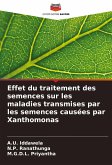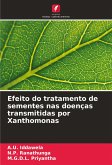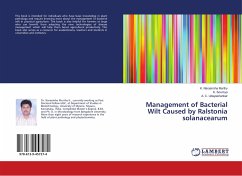Black rot caused by Xanthomonas campestris pv. campestris (Xcc) is the most serious disease of the crucifer crops worldwide, which is identified as a seed borne disease. Black rot is widely seen in the Central and Uva provinces where cabbage is cultivated. Under local climatic conditions it is unable to produce cabbage seeds. Therefore, Sri Lanka completely depends on imported cabbage seeds. The imported cabbage seeds are heavily infected with Xcc. In this study seed treatment methods were tested for Xcc growth inhibition. H2O2 (concentrations 15 percent, 10 percent, 5 percent), Cu2O (concentrations 10 percent, 5 percent, 1 percent), CuOCl (concentrations 10 percent, 5 percent, 1 percent) and Hot water treatment were used as seed treatments to estimate the Xcc inhibition. The data for Seedling Vigour Index, Germination Percentage and Disease Incidence (DI) were used with 4 replicates.
Bitte wählen Sie Ihr Anliegen aus.
Rechnungen
Retourenschein anfordern
Bestellstatus
Storno








